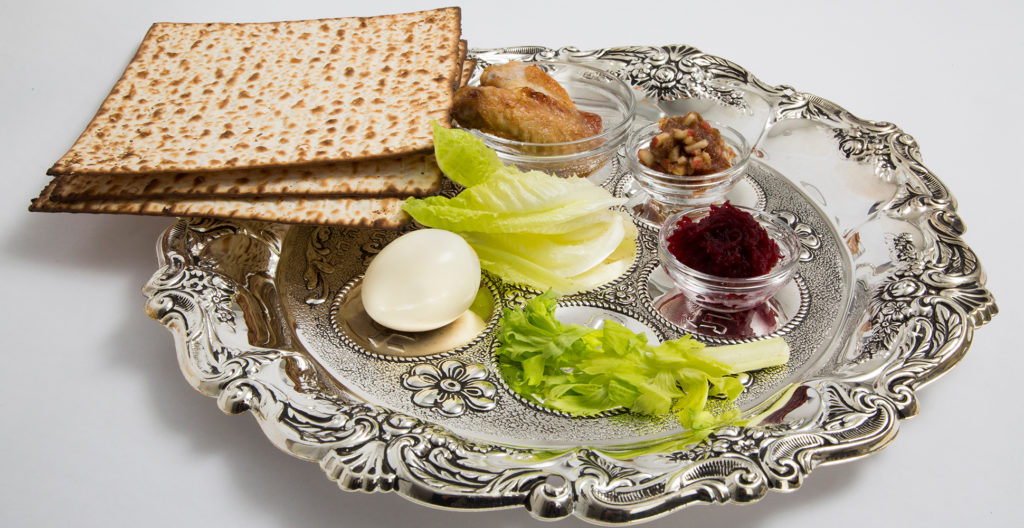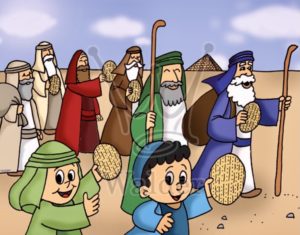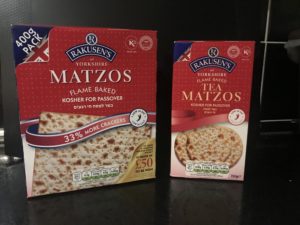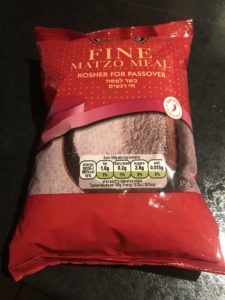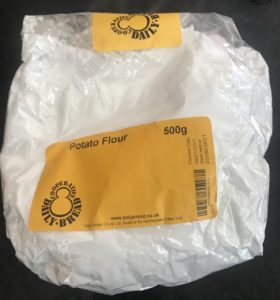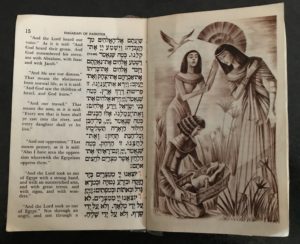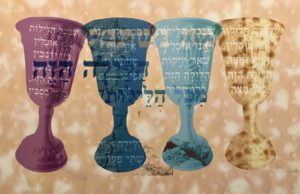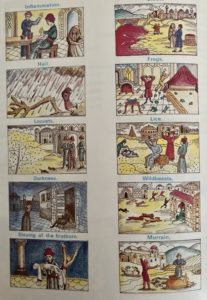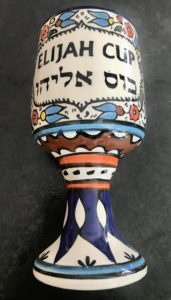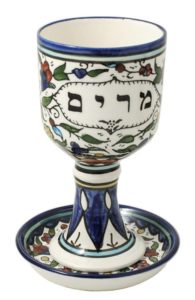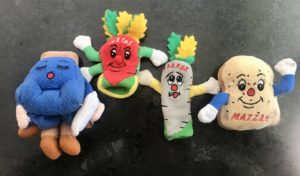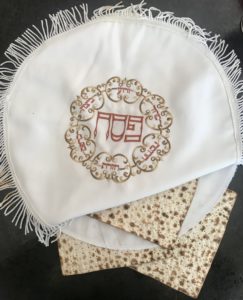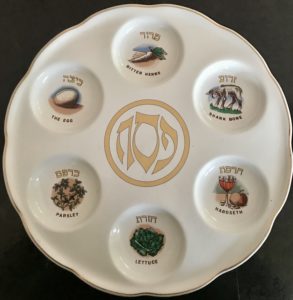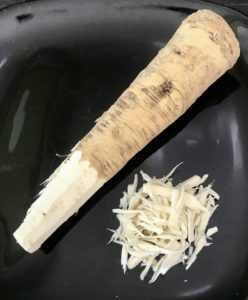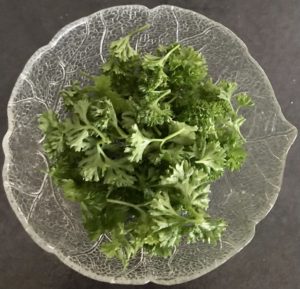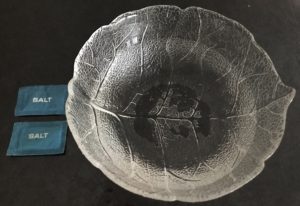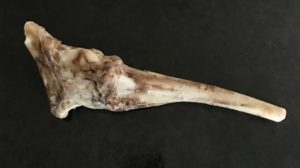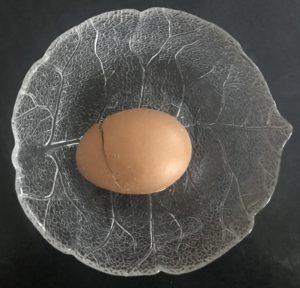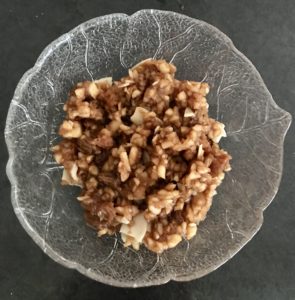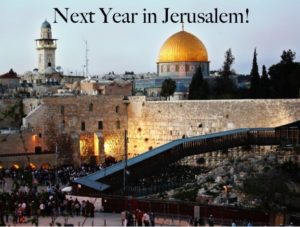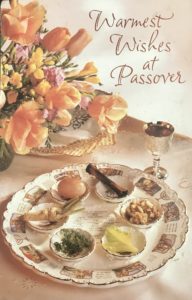Passover is one of our major festivals. It has three important elements:
- Historical – the momentous story of the Jewish Exodus from Egypt.
- Spiritual – the gratitude for our freedom and the hope for freedom for all in the future.
- Agricultural – a celebration of springtime and new life.
It is also a festival of opposites – slavery and freedom, joy and pain, bitter and sweet, which is a reflection of life itself.
The Background of Passover
The story dates from over 3000 years ago and can be found in Exodus, the second book of the Torah.
The name Passover ( Hebrew – Pesach ) refers to the last of the ten plagues when the ‘Angel of Death’ literally ‘passed over’ the Jewish homes and in this way their first born sons were saved. That night Pharoah finally agreed to let the Jewish people go free therefore Passover is also referred to as ‘the time of our freedom’. (See Jewish Festival Stories).
Another name for Passover is ‘the festival of Matzah’ (unleavened, unrisen bread). The Torah commands us to eat Matzah to remember how our ancestors had to leave Egypt in such a hurry that the dough for their bread didn’t have time to rise. (Legend has it that they put the raw dough on their backs as they ran away and the hot sun baked it into hard, flat crackers.)
The very first Passover was then observed. Each family roasted a lamb and ate it with Matzah and bitter herbs.
Passover has been celebrated since ancient times. During the period of the second Temple in Jerusalem, families would travel to the Temple at Passover to offer a sacrificial lamb (known as the Paschal lamb or burnt offering) and stay for a week of celebration. Thus Passover is known as one of the ‘pilgrimage’ festivals.
After the destruction of the Temple in 70 C.E., the Paschal lamb could not be offered so the Passover ritual focused on the Seder meal (see below) and not eating leavened food.
These practices were then followed through medieval times to the present day.
When is Passover Celebrated?
Today Passover is celebrated for a week from 15-21st of the Hebrew month of Nissan.This usually occurs in late March or April and often coincides with Easter. (See The Jewish Year).
The Passover Seder (See below) is known to be Jesus’ Last Supper and as such is often re-enacted by Christians.
What Happens at Passover?
For the entire week of Passover we substitute ‘leavened’ (risen) foods for Matzah.
The Torah tells us to remove all Chametz from our homes. Chametz is wheat, oats, rye, barley or spelt which has been added to water for longer than 18 minutes, leading to rising or fermentation. Leavening agents such as yeast, sourdough and foods made from such mixtures are also considered as Chametz. eg: bread, rolls, biscuits and pasta.
Ashkenazi Jews- those of European descent- also avoid rice, beans, corn, lentils, sesame seeds, peanuts and edamame beans.
Before Passover starts, many families engage in a thorough cleaning of the house removing all traces of Chametz. Not only can we not eat it, we are not even supposed to have any in the house! It is given away to non Jews and/or a food bank. There is often a tradition of a final search for Chametz using a candle, a wooden spoon and a feather. Any Chametz found by the light of the candle is swept into the spoon by the feather and burnt by 10am the following day! After this is declared “Any Chametz which I have not seen or removed shall be considered as the dust of the earth”.
There is also a symbolic reason for removing Chametz – dough that has been allowed to ‘puff up’. It reminds us how we can get ‘puffed up’ and full of self-importance. Getting rid of it before Passover makes us feel humble and less ‘puffed up’ with false pride!
Cupboards are replaced with food that is Kosher for Passover and there are many delicious recipes for Passover food. (See Traditional Jewish Recipes).
Orthodox families may even replace their usual pots, pans, crockery and cutlery with special sets which are only used at Passover.
Matzah
Matzah is made from flour and water that has not been allowed to rise. To be classed as Kosher for Passover, no more than 18 minutes must elapse before the Matzah is baked.
Flour and water are mixed to form a dough. The dough is then kneaded for about a minute and rolled out thin and flat. A special machine then perforates the Matzah with tiny holes to prevent it rising in the oven. Finally it is rushed into a hot oven for a quick baking.
Some families use only home baked Matzah from flour which has been watched from the harvest of the wheat to the bake!
Matzah is available in different shapes, such as rounds and squares and can be ground down to make Matzah Meal. This comes in different grades such as fine or cake meal – a substitute for flour, or medium meal- a substitute for breadcrumbs.
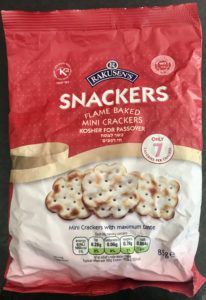
NB. In the UK, Matzah and Matzah meal can be found in blue and red packaging. It is only the red that is specifically certified as Kosher for Passover. The blue packets are for year-round use.
We also use whipped egg whites or potato flour as a rising agent.
The Seder
Passover centres around the special service/meal called the Seder (pronounced Sayder). The Hebrew word means ‘order’. The specific ‘order’ of the prayers, rituals, readings and songs are contained in a prayer book called the Haggadah (Hebrew – narration, telling of the story.) (See below).
The Seder is held on the first and/or the second night of Passover. On the first night, it is usually held at home with family, relatives and friends. On the second night, a communal Seder is held at the Synagogue. It is traditional to offer hospitality and charity to those in need. Seders usually last 2-3 hours with a main meal eaten halfway through and families tend to create their own traditions.
Haggadah
The story of the Exodus is retold at the Seder. As parents, it is our religious duty to do this so that the story is passed on from generation to generation. We make sure our children play an active role in the Seder. As we relive the story we try to imagine that we were the slaves, suffering their pain and their joy by eating symbolic foods (See below). This helps us to experience the Seder in a more profound way.
The service is inter-active – each person has their own Haggadah and takes turns to read from it. Some Haggadot (plural) include beautiful illustrations and there are also special versions for children.
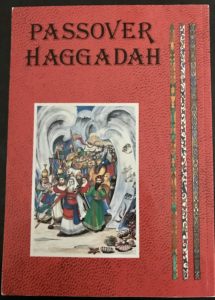
Main Elements of The Seder
Lighting the candles
The Seder always starts in the early evening and is welcomed by lighting the 2 candles.
The Four Cups of Wine
We bless and drink 4 cups of Kosher wine or grape juice at the Seder to represent the 4 promises made by God to the Jewish people – ‘I will bring you out’, ‘I will deliver you’, ‘I will save you’ and ‘I will take you for my people’. Of course, we do not have to drink 4 full cups, especially if guests are driving! The cups are filled at the start and refilled 3 more times during the Seder.
At the point in the story when the 10 plagues are recited, a drop of wine will be removed each time to lesson the ‘enjoyment’ of the remaining wine. In this way, we even remember the suffering of our enemies.
The Cup of Elijah
There is a special cup of wine for Elijah, a prophet of the 9th Century B.C.E. He has a spiritual significance for Jews, some of whom believe that he will announce the Messianic Age.
During the Seder we open our front door and invite him in as our guest to bring peace and love and an end to all suffering.
The cup of Elijah is a symbol of our hope for freedom for all in the future.
Miriam’s Cup
This is a relatively new addition to the Progressive Seder table. It is placed beside the Cup of Elijah and filled with water to symbolise Miriam’s Well. This was a water source for the Israelites in the wilderness and thought to offer not just sustenance but also healing qualities. The Cup is a way of highlighting Miriam’s importance both as Moses’ sister and as a symbol of feminism within Judaism.
The Four Questions (Ma Nishtanah – why on this night?)
Near the beginning of the Haggadah are found the Four Questions. They are recited or sung by the youngest child who is able to read Hebrew:
- ‘Why on this night do we eat Matzah and not bread?’
- ‘Why on this night do we eat Maror?’( bitter herbs- horseradish root)
- ‘Why on this night do we dip twice?’
- ‘Why on this night do we lean?’
These questions are the cue for the Leader of the Seder to explain the story of the Exodus which contains the answers:
- Matzah symbolises the unleavened bread.
- Bitter herbs are a reminder of the misery felt by the Jewish slaves.
- We dip parsley/radish in salt water and also the bitter herbs in Charoset. (See below).
- Leaning is a reminder that the slaves were not allowed to lean and eat their meals at leisure. During the Seder, we lean on cushions to demonstrate that we are now free both in spirit and body position.
Matzah Cloth
This is a decorated cloth which has three sections for the Matzah. When the Leader answers the first question, he/she will hold up the cloth and explain why we eat it.
The top piece of Matzah will later be blessed and the bottom piece shared out and eaten with the Maror and Charoset.
The middle piece is broken in two and the larger of the pieces will be hidden for the children to find after the meal. It is called the Afikomen ( Greek – dessert). It is traditional for the child who finds it to strike a bargain for a reward in return for the Matzah. It will then become the last thing eaten after the meal.
The Seder Plate
This is a large, decorated plate divided into sections containing the symbolic foods.
Symbolic Foods
Maror – a bitter herb- grated or sliced horseradish root – recalling the bitter lives of the Jewish slaves. During the Seder it is dipped into Charoset (See below) and eaten. This symbolises the misery of oppression being ‘neutralised’ by the sweet joy of freedom. We also eat the Maror sandwiched between 2 pieces of Matzah.
Karpas – a green vegetable- usually parsley or lettuce- a symbol of springtime. It is dipped into the salt water and eaten. In some parts of the world radish is used instead of parsley.
Salt Water – representing the tears of the slaves.
Zeroa – a roasted shank bone of lamb, reminiscent of the lamb the slaves roasted before leaving Egypt and also the sacrificial Paschal lamb (the roasted or burnt offering in ancient times). A lamb is also a reminder of springtime. This is purely symbolic and not eaten.
Beitzah – a roasted egg, which has been previously hard boiled. The roasting or ‘burning’ is also a symbol of the Temple offering and the egg itself, a reminder of new life. This too is only for display although some families have a hard boiled egg dipped into the salt water as a starter for their Passover meal.
Charoset – a sweet paste usually made from grated apples, chopped nuts, cinnamon, raisins and Kosher wine. It symbolises the mortar or cement used by the slaves to build Pharoah’s cities and palaces. The sweetness reminds us of the joy of freedom.
The Maror is dipped into the Charoset and eaten. Thus we have the opposites of bitter and sweet – an analogy for life itself!
The Order of the Seder
1). Kaddesh
Say Kiddish (the Blessing over the wine) and drink the first cup of wine.
2). Ur Chatz
Washing of hands.
3). Karpas
Say the Blessing and eat a vegetable dipped in salt water.
4). Yachatz
Break the middle Matzah and hide the larger half – the Afikoman.
5). Maggid
Tell the story of Passover, ask the Four Questions, drink the second cup of wine.
6). Rachtzah
Wash the hands and recite the Blessing.
7). Motzi Matzah
Say the Blessings and eat the Matzah.
8). Maror
Say the Blessing and eat the Maror.
9). Korech
Eat a sandwich of Matzah and bitter herbs.
10). Shulchan Orech
Eat the festive meal.
11). Tzafun
Find the hidden Afikoman and share it for dessert.
12). Barech
Say the Blessing after the meal, drink the third cup of wine and welcome the prophet Elijah.
13). Hallel
Sing songs of praise, ending with the fourth cup of wine
14). Nirtzah
More songs and closing prayer.
We end with the saying “next year in Jerusalem!” This wish expresses a longing for the Messiah/Messianic era which will bring freedom and peace to all.
Summary
Passover is a festival of celebration and remembrance. It celebrates the coming of spring and a major event in our history – our freedom from slavery and the birth of the Jewish people as a cohesive nation. After 40 years of wandering in the desert, they reached the ‘Promised Land’ of Canaan, now Israel.
As with other festivals such as Chanucah and Purim, the underlying message of Passover is one of triumph over evil – the victory of the Jewish minority in the face of massive persecution.
In our history there have been innumerable ‘Pharoahs’ and yet we still survive!
One of the reasons for this is the emphasis placed on being mindful of our history and passing it on to our children.
Every year at Passover, we are commanded to retell the Exodus story. It is told in a simple yet dramatic and fun way- one which will hopefully stay in our childrens’ memory forever. Passover is an important part of their heritage – one that we pray they will pass on to their own children and so on, ad infinitum.
Ultimately we learn from Passover to value our own freedom, to use it responsibly and to hope for a time when all peoples will live in freedom and peace.

